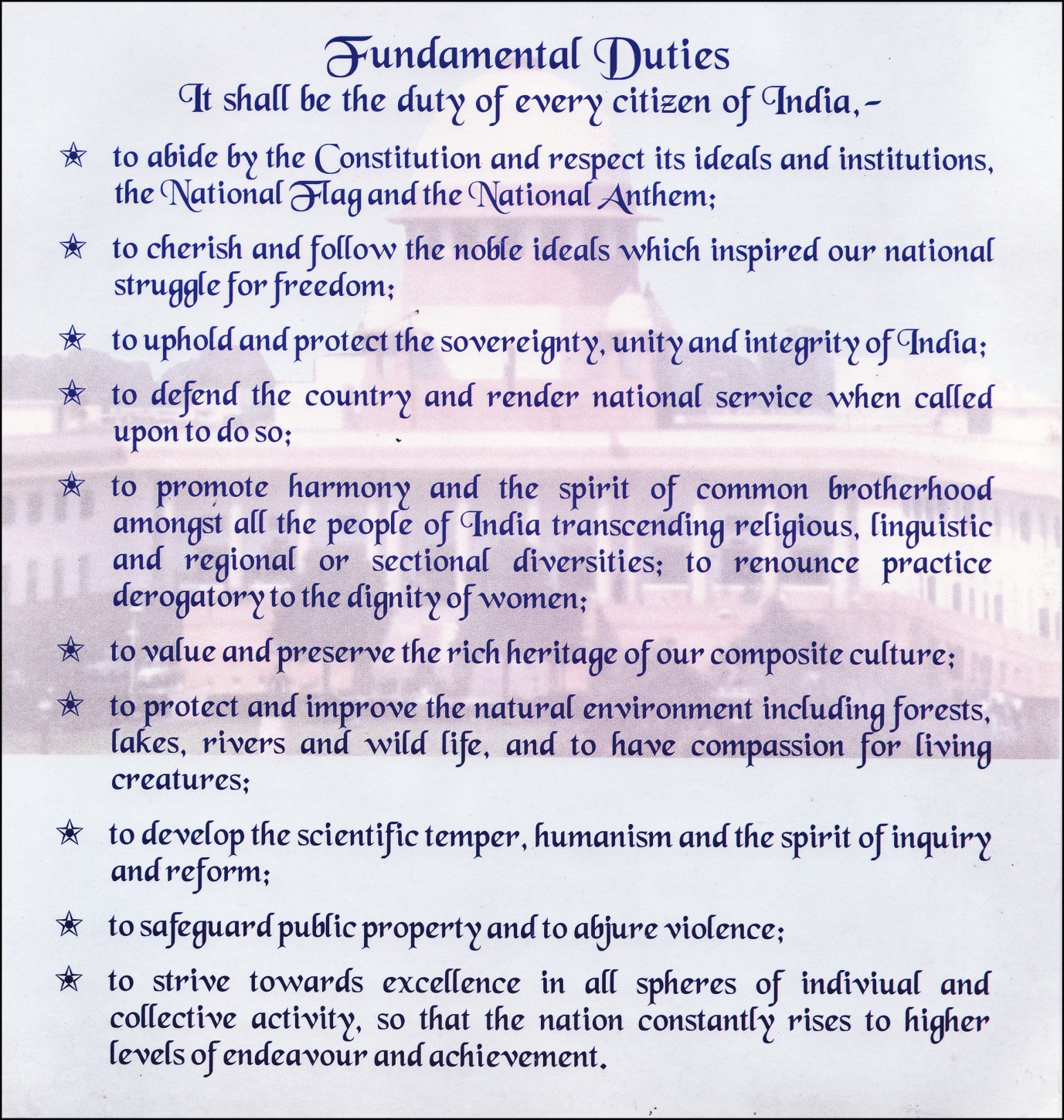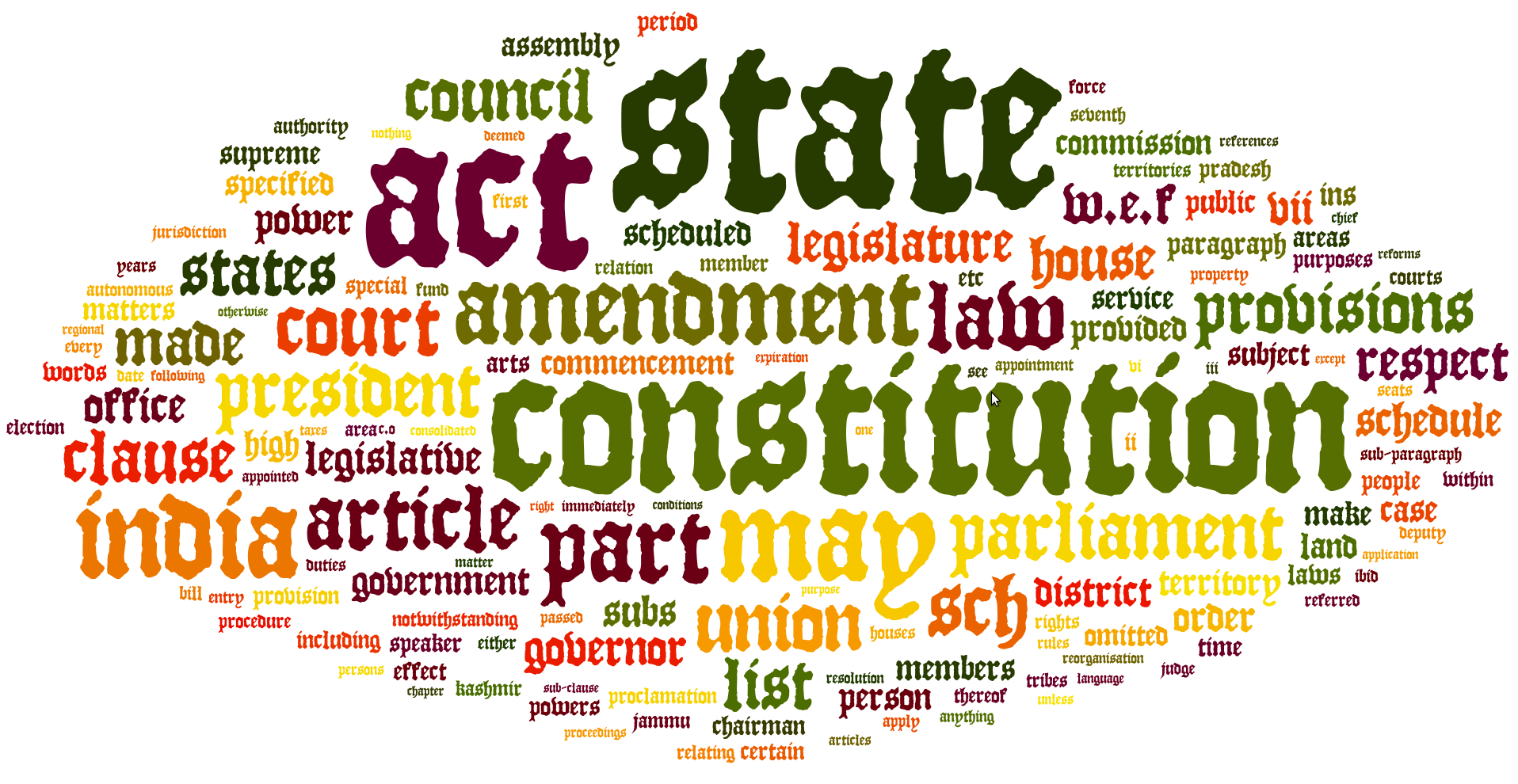The Indian constitution originally provided 7 categories of fundamental rights. But one fundamental right, that to property was removed from the list of fundamental rights by 44th amendment. Right to property now is an ordinary legal right. Thus there are now 6 categories of fundamental rights. These are:
(1) Right to equality (Arts. 14-18).
In this category there are five rights
- Equality Before Law:- Equality before law is well defined under the Article 14 of the Constitution which ensures that every citizen shall be likewise protected by the laws of the country. It means that the State will not distinguish any of the Indian citizens on the basis of their gender, caste, creed, religion or even the place of birth. The state cannot refuse equality before the law and equal defense of the law to any person within the territory of India. In other words, this means that no person or groups of people can demand for any special privileges. This right not only applies to the citizens of India but also to all the people within the territory of India. Equality means that equals should be treated equally.
- Abolition Of Discrimination On Grounds Of Caste, Race, Sex Or Religion:- The right of Social Equality and Equal Access to Public Areas is clearly mentioned under the Article 15 of the Constitution of India stating that no person shall be shown favoritism on the basis of color, caste, creed language, etc. Every person shall have equal admittance to public places like public wells, bathing ghats, museums, temples etc. However, the State has the right to make any special arrangement for women and children or for the development of any socially or educationally backward class or scheduled castes or scheduled tribes. This article applies only to citizens of India.
- Equality in public employment, Article 16 of the Constitution of India clearly mentions that the State shall treat everyone equally in the matters of employment. No citizen shall be discriminated on the basis of race, caste, religion, creed, descent or place of birth in respect of any employment or office under the State. Every citizen of India can apply for government jobs. However, there are some exceptions to this right. The Parliament may pass a law mentioning that specific jobs can only be filled by candidates who are residing in a particular area. This requirement is mainly for those posts that necessitate the knowledge of the locality and language of the area. Apart from this, the State may also set aside some posts for members of backward classes, scheduled castes or scheduled tribes which are not properly represented in the services under the State to uplift the weaker sections of the society. Also, a law may be passed which may entail that the holder of an office of any religious institution shall also be a person professing that specific religion. Though, this right shall not be granted to the overseas citizens of India as directed by the Citizenship (Amendment) Bill, 2003.
- Abolition of untouchability, Article 17 of the Constitution of India abolishes the practice of untouchability in India. Practice of untouchability is declared as a crime and anyone doing so is punishable by law. The Untouchability Offences Act of 1955 (and now Protection of Civil Rights Act in 1976) states punishments for not allowing a person to enter a place of worship or from taking water from a well or tank.
- Abolition of titles. Article 18 of the Constitution of India prohibits the State from granting any titles. Citizens of India are not allowed to accept titles from a foreign State. Titles like Rai Bahadurs and Khan Bahadurs given by the British government have also been abolished. Nevertheless, academic and military distinctions can be conferred upon the citizens of India. The awards of ‘Bharat Ratna’ and ‘Padma Vibhushan’ cannot be used by the beneficiary as a title and is not prohibited by the Constitution of India. From 15 December 1995, the Supreme Court has sustained the validity of such awards
(2) Rights to freedom.
(Arts. 19-22) these now include six freedoms-
- Freedoms of speech and expression,
- Freedom of assembly without arms of association,
- Freedom of movement,
- Freedom of residence and
- Freedom of profession oroccupation.
Each one of these six freedoms is subject to some restrictions. For rights can never be absolute. Individual rights must be reconciled with the interests of the community. It is logical that equal rights for all must mean limited rights for any. Hence, the state may impose ‘reasonable restrictions’ upon the exercise of any of these rights.
Restrictions
Firstly, the state may impose restrictions on the exercise of the right to freedom of speech and expression on eight grounds. These are:
- defamation,
- contempt of court,
- decency or morality,
- security of the state,
- friendly relations with other states,
- incitement of offence and,
- sovereignty and
- integrity of India.
Secondly, the freedom to assemble is subject to two restrictions. The assembly must be peaceable and the members of assembly must not bear arms. However the Sikhs are allowed to carry ‘Kirpan’ as part of their religious creed. In the U.S.A. right to bear arms is fundamental right. In India, this right is denied in the interest of public order.
Thirdly, the right to form associations or unions does not entitle persons to enter into criminal conspiracy either against individuals, groups or against the state.
Fourthly, the right to move freely or to reside and settle in any part of India, does not cover trespass into homes or restricted areas. State also may restrict this freedom to protect the aboriginal tribes.
Finally, the right to practice any profession or to carry on any occupation, trade or business are also subject to reasonable restrictions. Thus professions or, trade or, business must not be harmful to the interest of the community. The state may also prescribe qualifications for particular profession or, technical occupation. The state may itself carry on trade or business to the exclusion of citizens.
Power of Courts to enforce freedom of citizens of India
Every Indian citizen has the power to move the High Court or the Supreme Court for protecting and securing his personal freedom. The Courts are empowered to issue writs in the nature of habeas corpus. The courts can order the presence of detained or imprisoned person and set him free in case there is no legal justification for his detainment or imprisonment.
Rights to Freedom during National Emergency
The rights to freedom under Article 19 of Indian constitution are suspended during the period of National Emergency declared by the President of India.
Further, during the period when the National emergency is in operation, the President is empowered to suspend the right of citizens to move the Supreme Court for the enforcement of their personal freedom.
Conclusion
Each one of the fundamental freedoms guaranteed by the constitution of India is hedged by many restrictions. They are not absolute. This led to the criticism that Indian freedom is a myth and not reality for what has been given with one hand has been taken away with the other.
This criticism is unfair. For fundamental rights can nowhere be absolute. For logically, one can be absolutely free only when all others are absolute, slaves Individual freedom to be real must be social and hence must be limited.
There is a difference in the scheme of limitations on fundamental rights in the U.S. constitution and in the constitution of India. In the U.S.A. the restrictions are not mentioned in the constitution itself. This is left to judicial interpretations. In India on the other hand, the restrictions are mentioned in the constitution itself. It is not left to the vagaries of judicial interpretation.
On the whole fundamental rights everywhere are restricted or, limited. As Mr. Justice Mukherji observed in A. K. Gopalan vs. State of Madras case” There cannot be any such thing as absolute or uncontrolled liberty wholly freed from restraints.”
These freedoms are however not without limitations.
(3) Rights against exploitation (Arts. 24 and 25)
Include prohibition of traffic in human beings and prohibition of child labour.
(4) Rights to freedom of religion (Arts. 25-28)
Include freedom of conscience and freedom of religion. Citizens are free to profess and practice any religion. These provisions make India a secular state.
(5) Cultural and Educational rights (Arts. 29-30)
Include right to protection of language, script and culture given to the minorities. The minorities are also given the right to establish and administer educational institutions of their own.
(6) Right to constitutional remedies (Arts. 32-35)
Provides for enforcement of fundamental rights through the judicial process.Dr BR Ambedkar expressed it to be the heart and soal of Indian constitution.

Thus the constitution contains an elaborate scheme of fundamental rights. But the fundamental rights in India are not absolute. They are hedged by many limitations. Indeed, fundamental rights cannot be absolute anywhere in the world. Countries differ only in their degree of limitations on fundamental rights.
Part IV-A was added by the 42nd Amendment Act, 1976. It encompasses Part IV, Article 51A enumerating Ten Fundamental Duties of the Citizens of India.
There is no provision in the Constitution for direct enforcement of any of these Duties nor for any sanction to prevent their violation.But it may be expected that in determining the Constitutionality of any law, if a Court finds that it seeks to give effect to any of these duties, it may consider such law to ‘be reasonable’ in relation to Article 14 or 19, and thus save such law from unconstitutionality.

